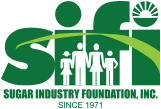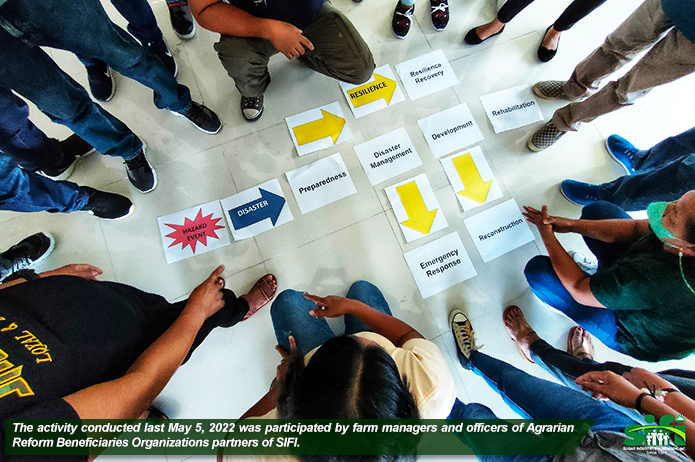“All disasters are man-made.”
To develop a growing common understanding of the philosophy, principles, practices, and processes of inclusive disaster risk reduction – working framework, SIFI’s advocacy pillar conducted its first Advocacy Forum for 2022, “Building Resilient Communities: Disaster Risk Reduction” at PSMA Training Hall, SIFI Training Center, Talisay City on Wednesday, May 5, 2022.
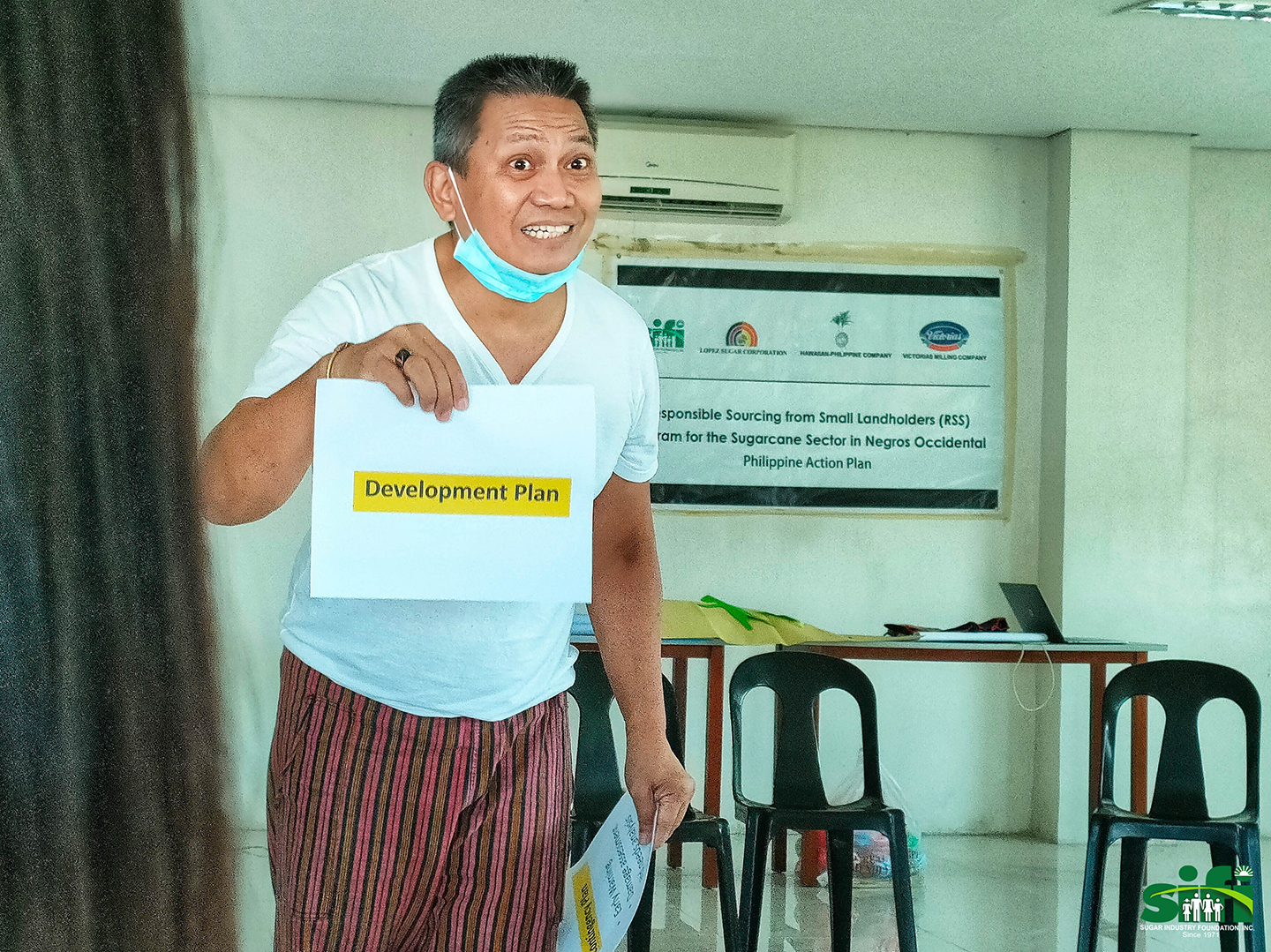
The forum was conducted by Rustico “Rusty” Biñas, a global advisor on disaster risk reduction and resilience building.
The activity was participated by farm managers and officers of Agrarian Reform Benificiaries Organizations partners of SIFI from Nabinay ARC in Cadiz City, Minuro ARC in Victorias City, Casal-Agan ARC, Isarfawa ARC, and Viscaya ARC in Pontevedra, Brgy. Don Jorge LA ARC in Bago City, Casa ARC in Talisay City, Estela ARC and HECARBA in La Carlota City, and Hda Candelaria Farmworkers Association in Manapla.
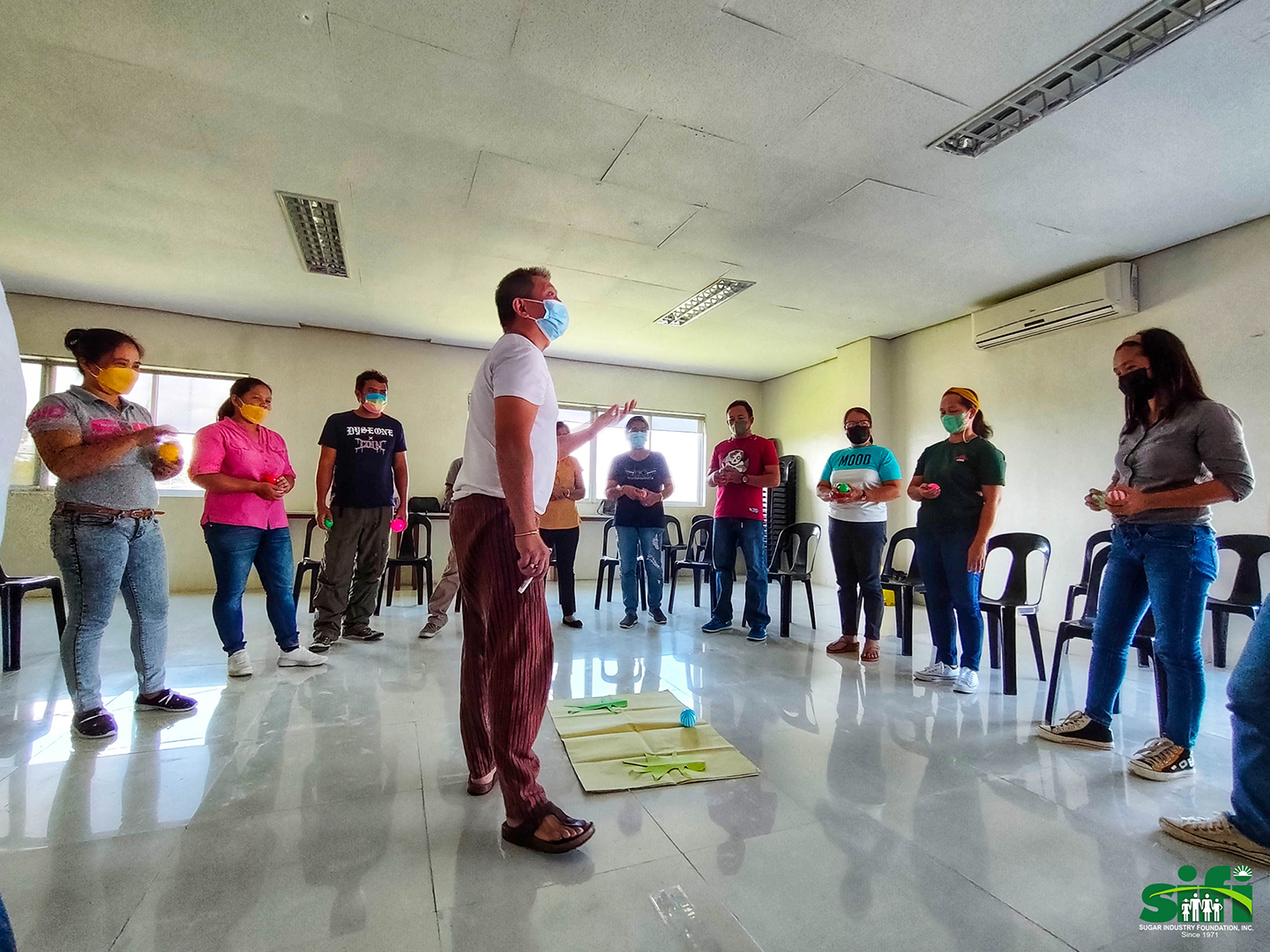
During the forum, Biñas reiterated that a common misconception is hazards and disasters are commonly used synonymously but their meanings are entirely different. To calculate a community’s disaster risk, one must know an organization’s hazard and vulnerability and divide it by its capacity.
Biñas also presented and discussed a resilience framework he developed in 2013 and was being used worldwide. A community must know its most common elements at risk, and then create a foundation of safety to protect its livelihood and health. The next step is to find a way to protect its ecosystem services, and lastly considering all of these factors into account, a community must have readiness in all aspects of society.
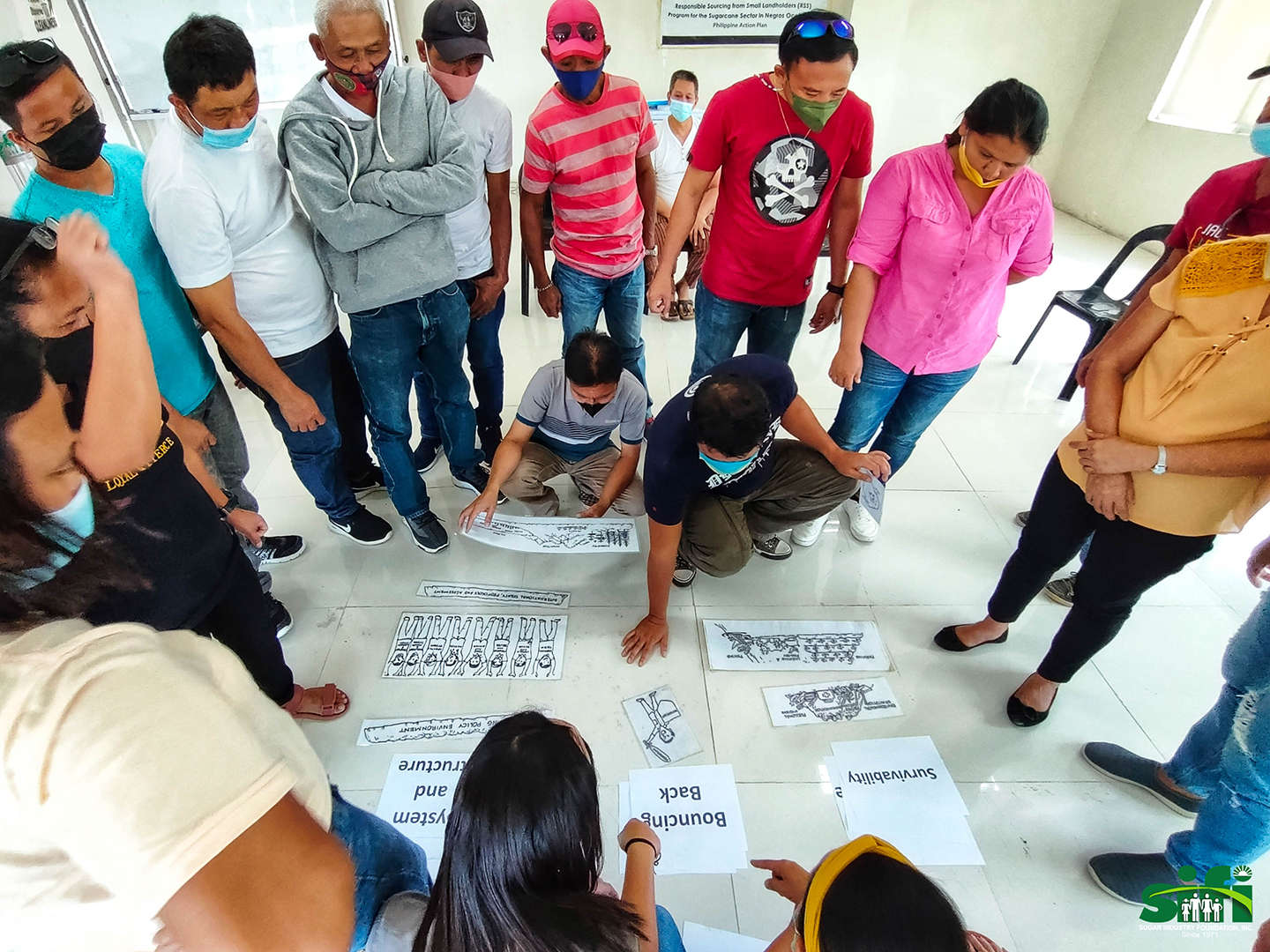
In the last part of the forum workshop, Biñas together with the participants conducted a hazard assessment exercise, created a contingency plan, developed objectives and indicators for hazard prevention, and created a pictorial model of group growth and development. He also discussed a community process towards a resilient community organization.
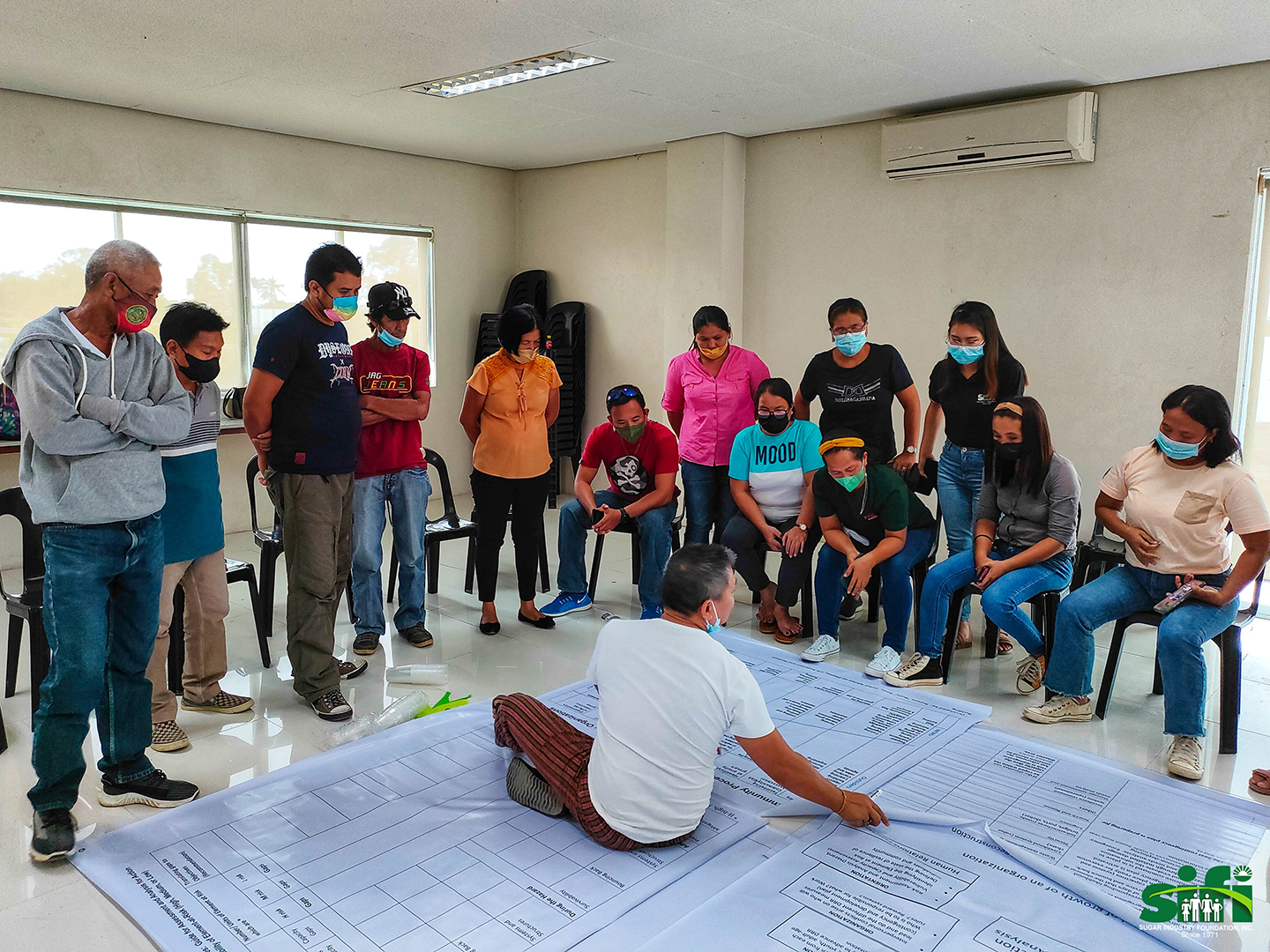
“I want the training to be continued because this training will be a great help for our cooperative,” Sarah Habola of Casal-Agan Agrarian Reform Cooperative said.
“This training is great and we want to have a follow-up so that we can apply it to our personal lives as well as the organization,” Ma. Cecilia F. Solis of Don Jorge LA ARC said.
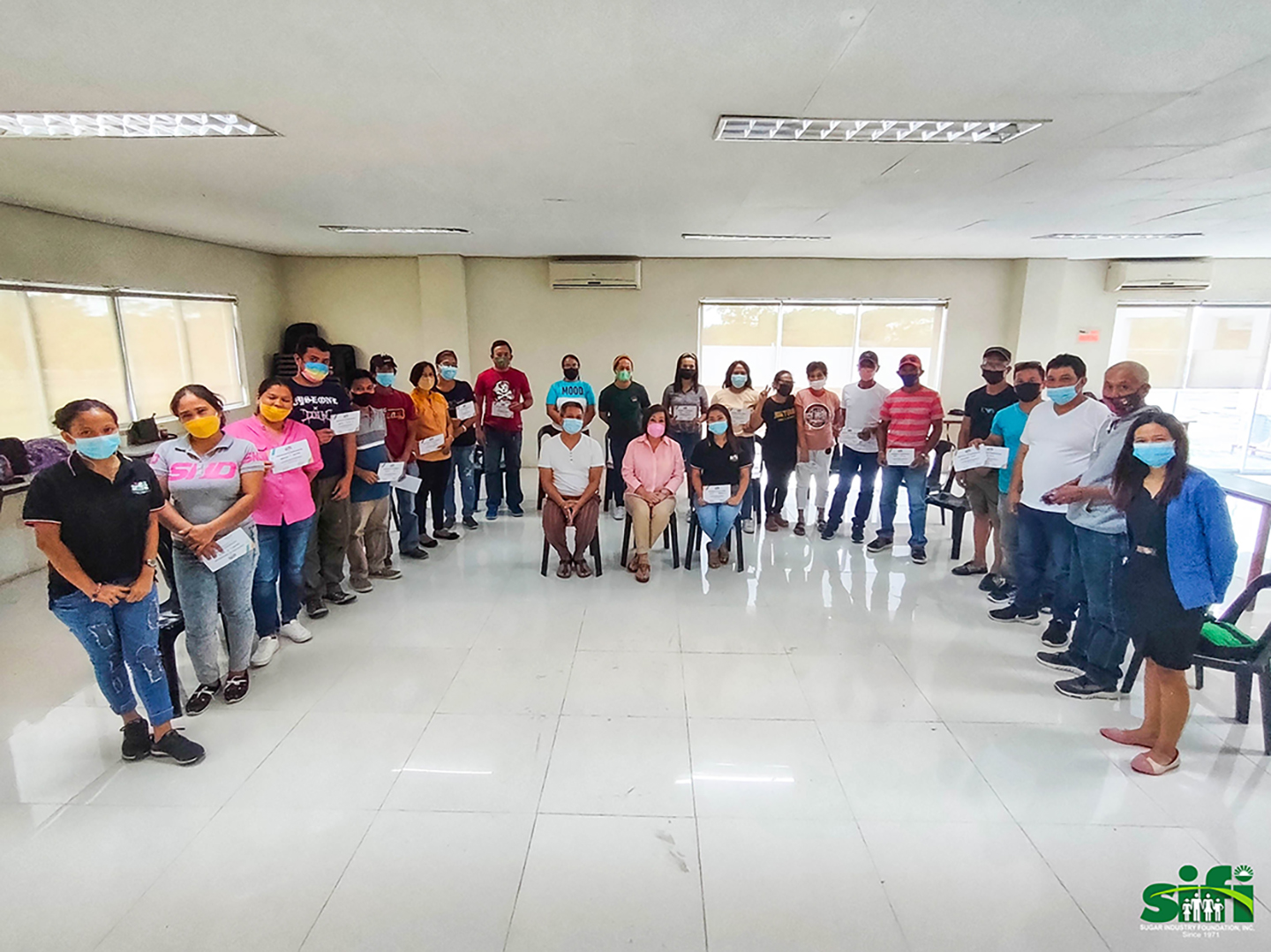
All participants are vaccinated against COVID-19. Health and safety protocols were observed during the advocacy forum.
